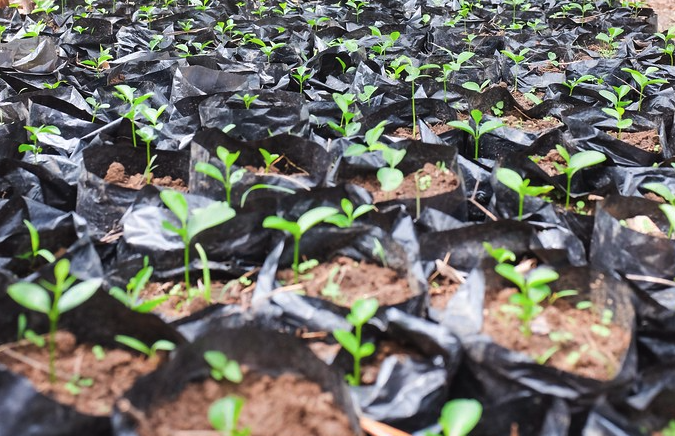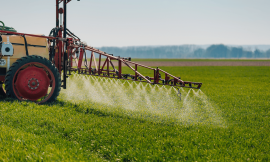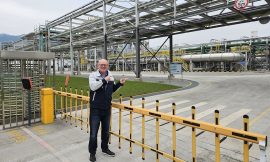Soil is not flashy. It doesn’t always make headlines. But healthy soil silently powers nearly everything we care about: food, water, our climate, our livelihoods. At the International Fertilizer Development Center (IFDC), we believe soil is one of the most powerful tools we have for achieving the United Nations’ Sustainable Development Goals (SDGs) because caring for soil helps us address the most significant global challenges, from ending hunger and poverty to protecting our planet.
Let’s start with hunger. It’s easy to see this connection. More than 95 per cent of our food comes from the soil, and when that soil is rich and cared for, crops grow better, harvests are bigger and food is more nutritious. Simple methods, such as using organic compost, rotating crops or applying the 4Rs of fertiliser stewardship (right source, right rate, right time, and right place), help restore soil and support farms in producing food.
Next, poverty. This connection is also clear: the top 20 per cent most degraded lands also have the highest average rate of poverty. Nearly 80 per cent of the world’s poor work in agriculture, which means their well-being depends directly on the land. Healthy soil helps farmers grow more, earn more and build better futures. Healthy soils transform lives and uplift entire communities.

Water? Soil helps there too. Healthy soil acts like a sponge, soaking up rain and storing it for plants to use later. It filters out pollutants, keeps rivers and lakes cleaner, and even helps prevent floods and droughts. Soil is nature’s water management system, subtly doing its job every day.
And what about climate change? Soil holds more carbon than all the world’s plants and the atmosphere combined. When farmers use climate-smart practices like cover cropping or reduced tillage, they not only protect the land; they actually help pull carbon out of the air and lock it in the ground.
Even biodiversity relies on healthy soil. A single teaspoon of healthy soil can contain more living organisms than there are people on Earth. These unseen creatures constantly work underground, breaking down organic matter, recycling nutrients and keeping the system balanced. Above the surface, healthy soil supports vibrant plant life, which feeds herbivores, attracts pollinators and creates habitats for countless species. When soil is degraded, these delicate food webs start to unravel. To conserve life on land, we must protect soils. When we restore soils, we help revive the natural relationships that keep ecosystems alive.
What’s amazing is how food, water, the environment and economic security connect through soil. When a farmer improves her soil, her crops do better. Her income goes up. Her children eat more nutritious food. Her land becomes more resilient to drought. Her community becomes more prosperous as more agricultural jobs are created. The environment gets a boost. It’s a ripple effect that starts with what’s under our feet.
Responsible use of fertilisers for healthy soil
To activate this ripple effect, IFDC promotes a suite of soil-improving practices, and the responsible use of fertiliser is among the most important. Far from being just a tool for increasing yields, the right kind of fertiliser, applied according to the 4Rs, can help rebuild soil fertility, replenish essential nutrients and support the billions of microorganisms that keep soils alive.

Without adequate nutrients, soil becomes depleted and unproductive, limiting the potential of even the best farming practices. But when fertilisers are integrated with organic matter, crop rotation and other sustainable strategies, they enhance the soil’s ability to nourish plants, retain water and capture carbon. IFDC champions fertiliser stewardship as part of a holistic approach to soil care because healthy soil needs a balanced diet, just like we do.
There’s still time to make soil health a global priority, but the clock is ticking. The 2030 deadline for the Sustainable Development Goals is fast approaching, and only 17 per cent of the goals are currently on track. Critical targets, such as ending poverty, achieving zero hunger, and addressing climate change, are not just off track—they’re worsening.
Farmers, governments and partners around the world need to take soil seriously as a farming issue and a foundation for a better future, because when we care for the soil, we can grow more than food. We can grow opportunity, resilience, and hope. So next time you look at the ground, don’t just see dirt. See potential. See progress. See the quiet power beneath your feet that could help us build a more sustainable world.
The IFDC’s SOIL+ initiative advances global advocacy for soil health as a key to achieving the SDGs. Through evidence, expertise, and partnerships, SOIL+ highlights how healthy soils drive sustainable development. Three new papers from the initiative explore links between soil health and the No Poverty, Zero Hunger, and Climate Action SDGs, offering practical insights for those shaping a more sustainable future. Read them here.
Header photo from IFDC Flickr.






